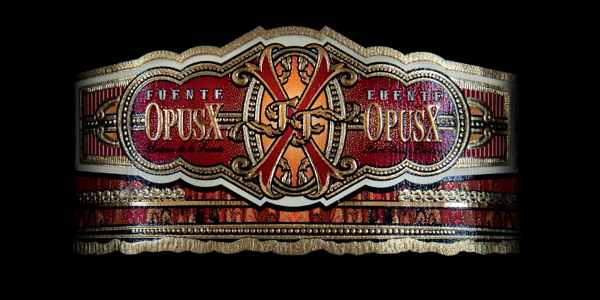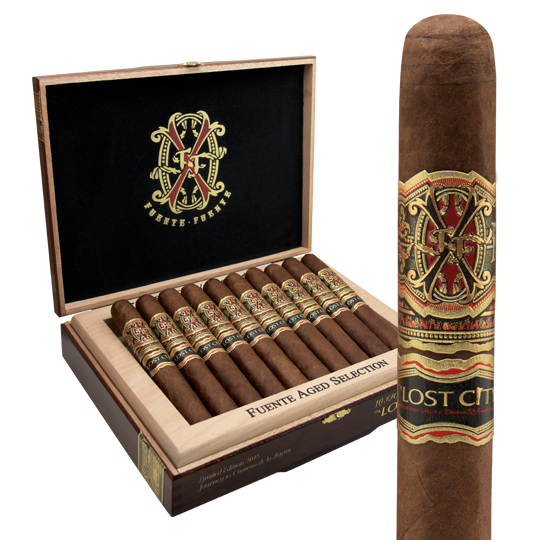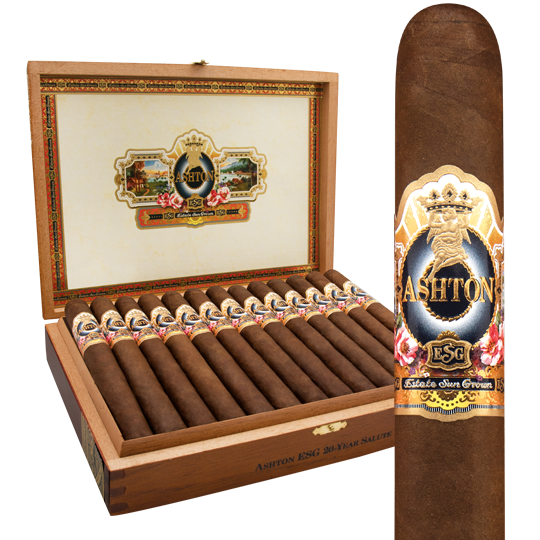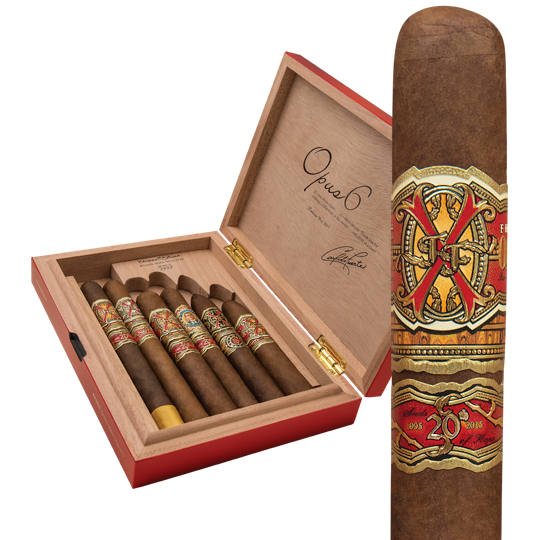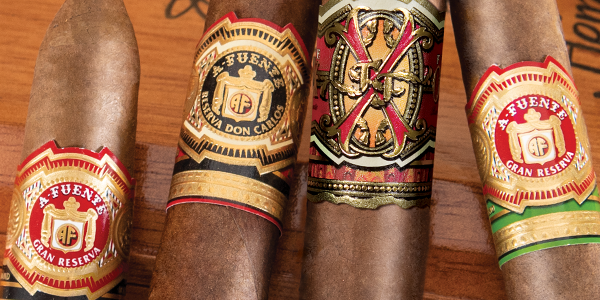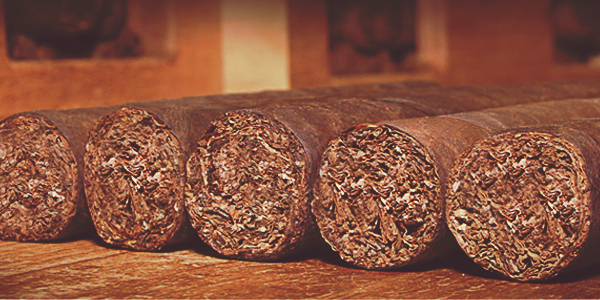History of Fuente Fuente Opus X Cigars
Carlos ‘Carlito’ Fuente, Jr., remembers two important things about the creation of the Fuente Fuente Opus X cigar. First, a statement made in 1988 to Carlito is one he took as a challenge.
“A well-known French retailer who owned a shop called Boutique 22 in Paris said to me ‘Carlito, you're not a cigar maker. You just assemble tobaccos.’ He told me that unless I made cigars out of Dominican tobacco, I'll never be a real maker of Dominican cigars, just an assembler of different parts. That really stuck with me.”
Second, Carlos Fuente Sr., Carlito’s father, always told his children that if they loved something, they should always try to be the best at it. That was all Carlito needed to embark on a seven-year long quest to grow a special Cuban-seed tobacco, including wrapper leaf, in the Dominican Republic.
Most Dominican cigars, at that point, needed tobacco from places like Connecticut, Cameroon or Ecuador to use as wrappers. No high-quality Dominican Puro – a cigar made purely of Dominican tobacco – existed. Most Dominican cigars were quite mild by comparison to those of today. Carlito set out on a mission. He sought the help of Angel Oliva, Sr., the founder of Oliva Tobacco Co. Oliva showed Carlito some land near Santiago, in the Dominican Republic (DR), that would become Chateau de la Fuente.
The soil was different at Chateau de la Fuente than in other parts of the DR. Still, Fuente determined that growing tobacco successfully had less to do with the soil and more with the kind of seeds being used. The first varietal of tobacco planted was Piloto Cubano. It grew well, but not well enough for wrapper. The leaves, however, were quite elastic. There was hope. The next seed was Corojo. Fuente planted 37 acres with Corojo in 1991. This time, the tobacco was grown under shade, filtering the sun’s rays through a mesh covering, much as was done in Cuba.
An article in Cigar Aficionado contained interviews with people in the industry talking about the Fuente shade-grown venture. Most of it was negative. This was before Opus X had a name. Carlito found support from his father.
“My father, he encouraged me. He thought I was crazy, but he got behind me no matter what.”
Finally, the tobacco was ready for a test. Carlito blended four or five different Dominican tobaccos. Most of the filler leaves came from the top of the plants for power and body. The wrapper came from Chateau de la Fuente.
“I first called it Project X From Planet 9. It was a working title until I could think of a real name,” Carlito Fuente told Cigar Aficionado. “I was looking through the thesaurus and was thinking of using the word ‘opulent.’ Next to it in the dictionary I came across the word ‘opus.’ The definition was perfect. I combined that with the letter X and thought ‘Opus X. It sounds like sex!' ”
Buzz abounded. Cigar Aficionado carried a 1994 article about the wrapper experiment and rated two of the cigars before they were available to the market. They got high scores. Cigar lovers could barely wait.
In November of 1995, when Fuente Fuente Opus X was made available to a few Manhattan retailers, lines formed out their doors. Customers could buy only individual cigars. The art for the boxes wasn’t finished. Later, the cigars were allocated [limited in distribution] and that served only to increase demand. Carlito made a decision, after hearing about a huge ensuing increase in California tobacco taxes, to ship Opus X cigars there, skipping the rest of the US. Only tobacconists on the coasts had the cigar. Tobacconists in the middle of the country were angry.
Ultimately, Opus X was released in seven vitolas. In a vertical tasting, they averaged a 90.1 score in a 1996 Cigar Aficionado newsletter. Then, trouble. Less than a year on the market, the Opus X cigar drew the attention and a lawsuit from the California-based Opus One winery, a joint venture of the Californian Robert Mondavi Corp. and Baron Philippe de Rothschild of France. The winery wanted all Opus X cigars taken off the market and to destroy all cigars in inventory. Opus One had a trademark for a pipe tobacco of the same name that it had acquired in 1995 from a German company. That pipe tobacco was imported into the US by Davidoff in 1997. Rumors circulated that Davidoff and Opus One were collaborating on creating an Opus One cigar. In 1998, a Tampa judge dismissed most of the winery’s claims, explaining the obvious: The cigars were not likely to confuse customers looking for Opus One wines.
The Fuente Fuente Opus X survived the lawsuit and has become perhaps the world’s most famous cigar name along with Cohiba. To assure that quality, Fuente hires rollers who have no cigar experience and trains them to produce Opus X.
“If they worked at another factory, it's too late,” Carlito said. “They've already picked up too many bad habits and no amount of retraining is going to change that.”
One roller produces only one size. Each roller produces between 100 and 150 cigars a day using the entubado method in which each leaf is scrolled and put into the bunch, enhancing air flow when smoked. Opus X is aged in closed cabinets, unlike other Fuente cigars that sit on open shelves. The cigars age at least one year.
Carlito Fuente has said that the other Fuente lines, excellent cigars on their own, allow him to dote on Opus X.
“Opus is like the yacht that sits in the marina all day. It's only used a small percentage of the time. That's the Opus X — my yacht.”
Opus X is still sailing strong. Chateau de la Fuente continues to produce wrapper leaf (used also for the Ashton Estate Sun Grown cigars). Leaves that don’t make it as wrapper sometimes get used as binder and filler, but unused tobacco is destroyed. Fuente is not letting that leaf get used elsewhere. The blend for Opus X has, Carlito Fuente insists, remained the same, but admits he has refined the cigar as he has learned more about the tobacco coming from the farm.
When it was introduced, Opus X was considered a strong cigar. Not so much today compared to other brands on the market, but it’s still a full-bodied smoke. On its 10th anniversary, the Opus X Double Corona was named Cigar Aficionado’s cigar of the year. (I just found one in my humidor!) Today, Opus X continues to get high marks. The best way to experience this iconic cigar is to get the Fuente Fuente Opus 6 Assortment at Holt’s. It was put together for the cigar’s 20th anniversary and contains six different vitolas in a handcrafted humidor made from Spanish cedar. Treat yourself.

